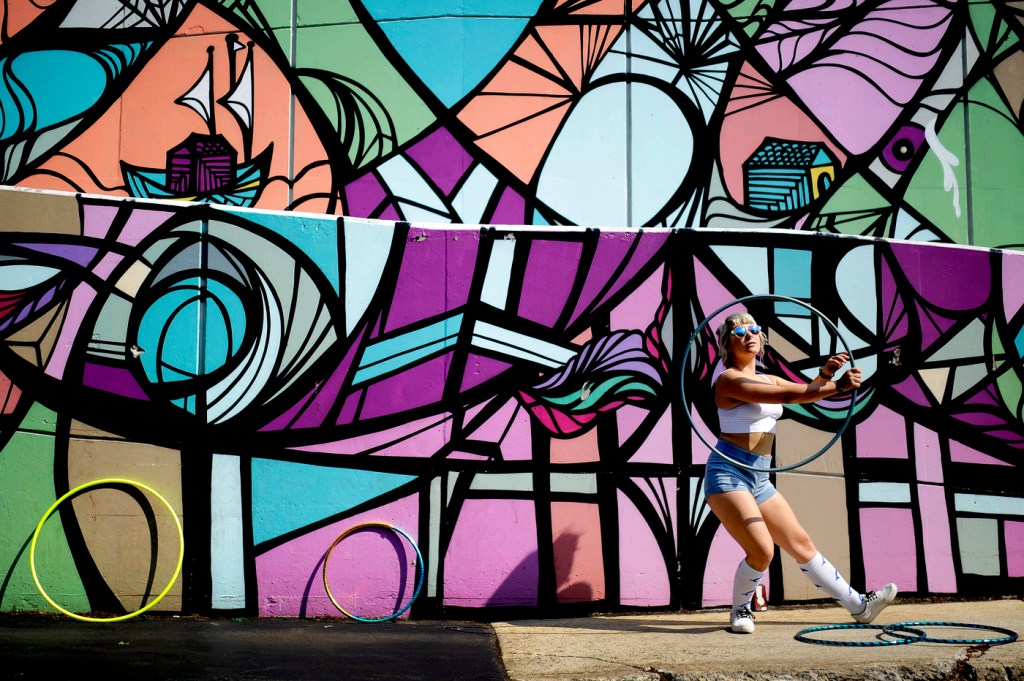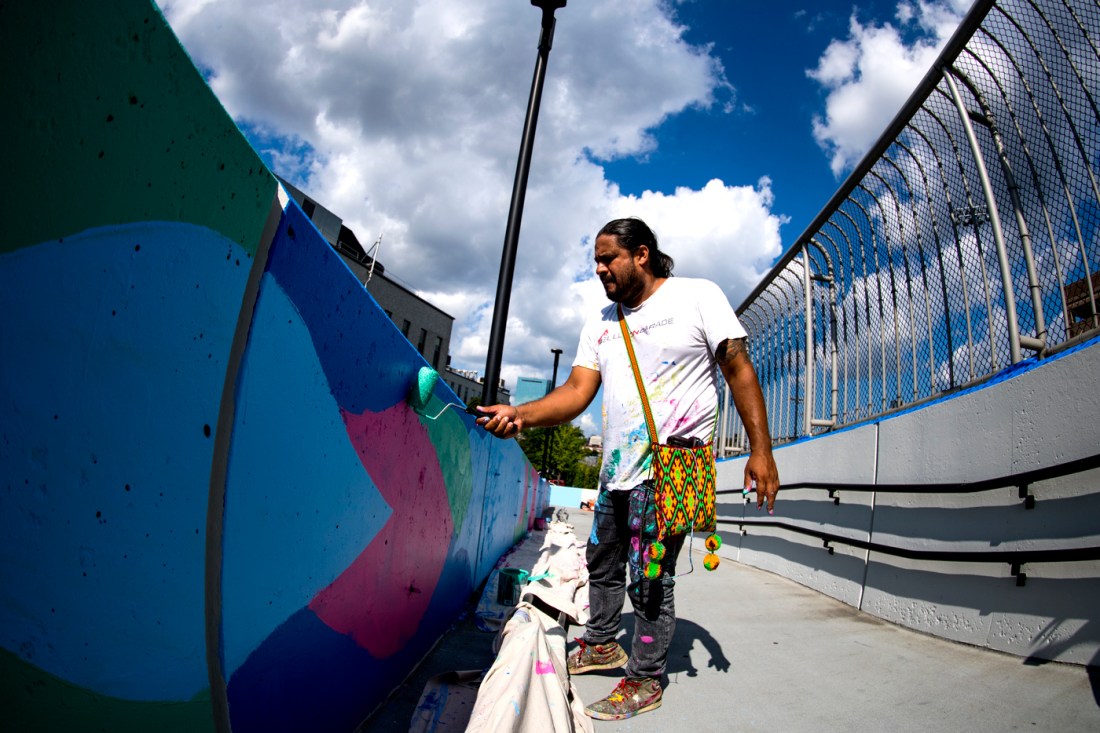Boston campus is his canvas. Artist to bring new life to one of Northeastern’s most iconic murals

After almost a decade, the iconic mural adjacent to Curry Student Center, “100 Years of Solitude,” will be replaced this spring with an entirely new mural by the same artist, Houston-based Daniel Anguilu.
Originally painted in 2014, the project is the newest piece in Northeastern President Joseph E. Aoun’s Public Art Initiative, which provides a platform for artists to brighten the Boston campus and make it their canvas. Launched in 2014, the initiative has invited artists from around the world to create one-of-a-kind pieces in spaces that are open to the community.
Since then, Anguilu’s mural has become an integral part of Northeastern’s campus. It includes vibrant colors and abstract imagery inspired by Colombian author Gabriel García Márquez’ magical realist magnum opus “One Hundred Years of Solitude.”
When May comes around, graduating Northeastern students can be seen taking their senior pictures in front of the wall-sized mural.

But in that time, the wall and pedestrian bridge that Anguilu painted have seen some significant wear and tear. Given the amount of work it would take to patch or fix the wall, Thomas Vannatter, Northeastern’s public art manager, says it made more sense to invite Anguilu back to paint an entirely new mural.
“There’s a reason why we want to bring him back: He’s delivering at a level that is amazing,” Vannatter says.
Anguilu’s work on the original mural set the tone for public art at Northeastern, which Vannatter says is designed “to elevate a space and to make it more active, to make it more comfortable, to make it more interesting, to make you look up from your phone.”
This isn’t the first time Anguilu has returned to “100 Years of Solitude.” In 2018, the artist expanded the piece, which currently spans the entirety of the MBTA wall and ramp adjacent to Curry Student Center, and he has done some additional touch up work as well.
The new mural will not extend over the pedestrian bridge, like it currently does, but it will retain Anguilu’s style—which takes inspiration from Mexican indigenous art as well as his roots in street art and graffiti—and the color scheme of the original piece.
The idea of reinventing his own work appeals to Anguilu. A piece of public art isn’t a painting stuck in a frame in a museum that will never change, he says. It can evolve, just like the community it’s a part of.
“Being able to come back and add and move around and not be so it has to be exactly like this, that’s, to me, the fun part of my work,” Anguilu says. “I can rearrange and fix however I see fit. That’s the way I approach my work.”
Over the next month, the mural will be stripped from the wall, which will be prepared and repaired to make a clean canvas. Anguilu approaches his work with intention but also a spontaneity that gives his work an organic, natural feeling, so he says he won’t have a sense of what the mural will be until he arrives on site.
“With your own body, using extensions and different rollers, you move around the whole wall until something makes sense to you,” Anguilu says. “I think for me, it’s almost like self-assuring that it’s already in you. It exists, it just has to come out and you have to be able to somehow make a gesture or make a mark, and that becomes a piece of art.”
Anguilu confirmed that the intergenerational story at the heart of “One Hundred Years of Solitude” will still be central to the new piece. In 2014, García Márquez passed away only days before Anguilu arrived on campus. Although the author’s words were the original source of inspiration nine years ago, Anguilu hopes to more fully capture the meaning of the novel this time around.
The meaning behind the novel has changed for him in the intervening years, and so has the world. García Márquez’ work is even more relevant now than it was a decade ago, he says.
“It’s incredible to me that there’s so much reference [in that book] to where we are at this time: It has always been us against us,” Anguilu says. “There have been all these historical events, and still we are against each other. We’re the same. That book has that message, but we still just look at it as a book. … It makes more sense to me for us to really start to look at what all this artwork that is created means because now it’s time for us to use it.”
Cody Mello-Klein is a Northeastern Global News reporter. Email him at c.mello-klein@northeastern.edu. Follow him on Twitter @Proelectioneer.





